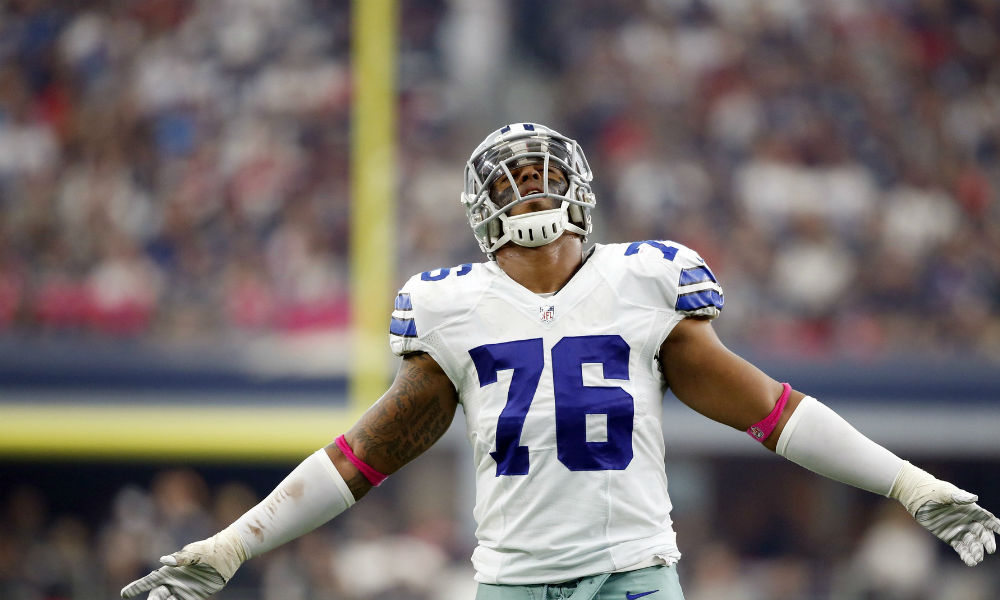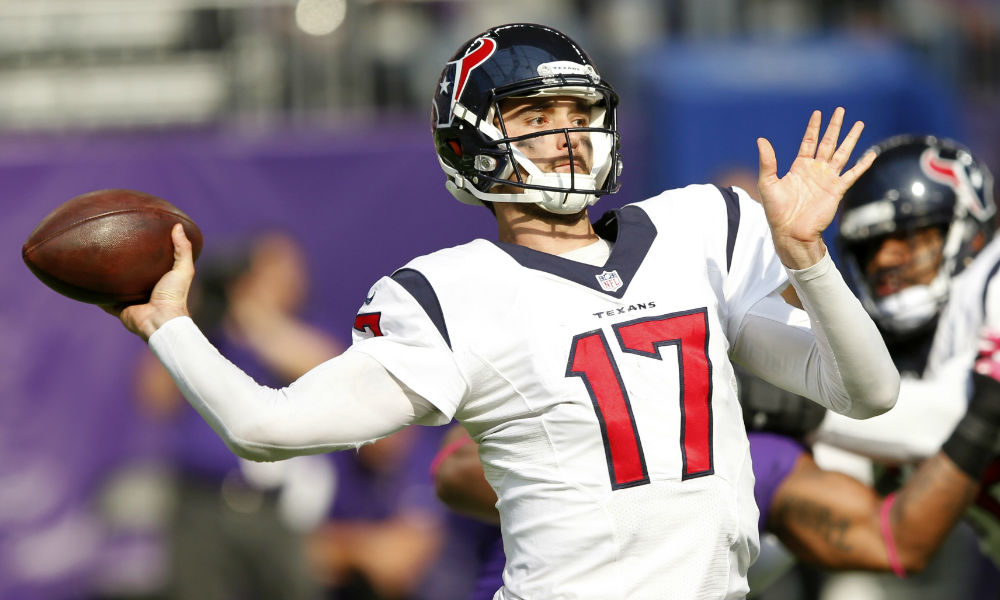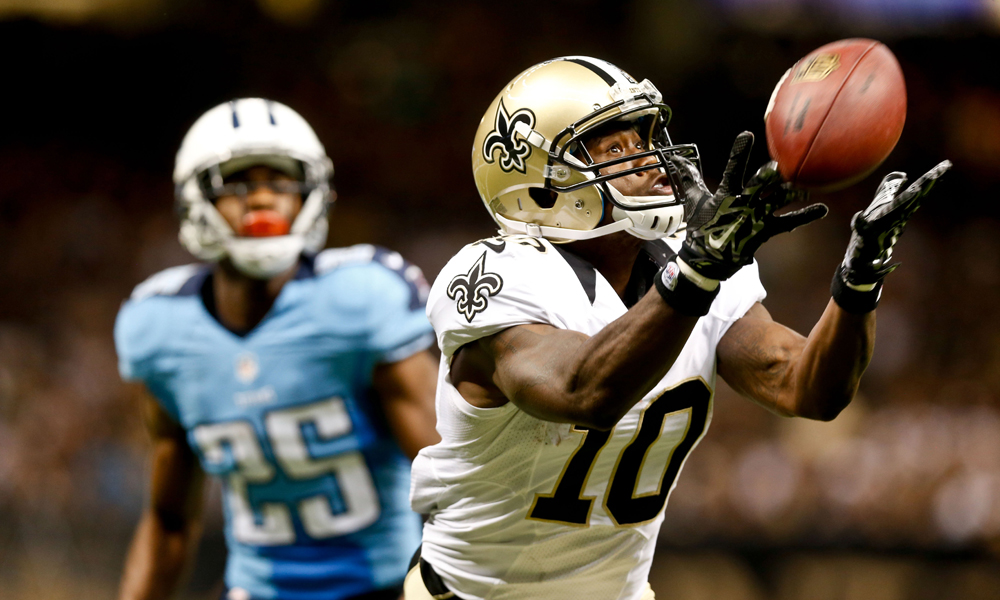News
The NFL is Getting Safer Under Goodell
Data shows that NFL’s commitment to player safety is paying off.
During his nine-year tenure as Commissioner of the National Football League, Roger Goodell has taken many missteps that have justifiably put him under fire. But there’s at least one thing the Goodell regime appears to be making significant progress on: player safety.
The hiring of Dr. Elizabeth Nabel on Monday as the NFL’s first Chief Medical Officer is just the latest in a long list of significant strides made by the league to address the safety of its players. It’s a topic that has been hanging over the league’s players, coaches, executives and fans for a long time, particularly over the last several seasons with severe injuries on the rise.
But through rule changes, new protocols and new hires — like that of Dr. Nabel — the league has taken several positive steps to make the game safer. Based on data released by the NFL during Super Bowl week, the new rules are having a healthy impact on the game in a positive way, especially as it relates to brain injuries.
A study of the last four years of player safety and injury information revealed that concussions were down across the board in 2014, and the concussion rate fell in stark contrast to the same data collected just two years ago.
In 2012, a league record 261 players were diagnosed with a concussion from the start of the preseason to the end of the regular season, including 173 in regular season games. In 2014, those numbers were down to 202 overall and just 111 in regular season games, a rate of .43 concussions per game, or one every other game. That’s a 36 percent drop in the incidence of in-game concussion in just two years. In-game concussions were also down 25 percent from last year’s regular season total of 148.
In remarks at his annual Super Bowl week press conference, Goodell credited the players and coaches with adjusting to the changes, and noted their efforts to continue playing the game at a high level in a manner that is safer for the players.
“Since 2012, concussions in regular-season games have dropped from 173 to 111, a decrease of more than one-third,” Goodell said. “The real credit goes to the players and coaches. They’ve adjusted to the rules and the challenge of creating a culture of safety for our game.”
One of the biggest areas of improvement has been the rapid decline in helmet-to-helmet contact. Helmet-to-helmet hits were still the leading cause of concussion in 2014, causing 52 of the 111 in-game concussions. But the number of concussions caused by helmet-to-helmet hits was down from 72 last season (28 percent) and 91 just two years ago (43 percent). The incidence of concussion by way of shoulder-to-head contact has also dropped starkly over the last three seasons, from 25 in 2012 to just seven concussions caused by shoulder-to-helmet hits in 2014.
Those two drastic drops account for most of the decline in total number of concussions. Jeff Miller, the senior vice president of the NFL’s health and safety policy, believes that’s a win that again belongs to the players, who have adjusted their playing style to execute in a more technically sound manner. No longer are players throwing their bodies around on every play to try to make a tackle, and that alone makes the game safer.
“Players are changing the way they’re tackling,” Miller said. “They’re changing the way they play the game.”
The NFL has also seen more gradual decline in the number of significant knee injuries suffered by players. The same Health & Safety study revealed that just 49 players suffered ACL sprains in 2014, down from 63 in 2012.
Almost all of that drop can be attributed to preparation. The NFL has reduced practice time as another player safety measure and just 22 players suffered ACL sprains in preseason practice and games in 2014, down from 31 in 2012. Not a single player suffered an ACL sprain in regular season practice, down from three in 2012. MCL sprains did tick up slightly in 2014 from 2012 and 2013, but the rise in those numbers came from in-game plays. Preseason and practice MCL injuries were also down from recent years.
The drop in knee and head injuries does run in stark contrast to the fact that the number of reported injuries to players rose 15 percent overall in 2014. The number of players who suffered season ending injuries — and were therefore placed on injured reserve — also rose significantly, from 226 in 2013 to 265 in 2014, according to STATS.
But the jump in those numbers is due in large part to an effort by the NFL to obtain more comprehensive reporting of injury data. This season marked the first time that the league collected medical records from each team electronically, another player safety measure that was a long time coming.
It appears those measures are working as part of a process, but it is one that clearly needs more tweaking. Concussion protocol is still far from perfect. Anyone who watched Julian Edelman stagger around the field in the Super Bowl after a fourth quarter hit by Kam Chancellor, then go on to score the game-winning touchdown a short time later, knows this. But the NFL is clearly taking meaningful steps to ensure the safety of its players and Goodell hinted before the Super Bowl that there may be more changes in the pipeline.
“Looking to the offseason, we will focus on innovation and technology in three key areas: the game, player safety and the fan experience. We are doing more to protect our players from unnecessary risk. Hits to defenseless players this season were down 68 percent, and there were similar decreases in other areas pertaining to the safety of the game,” he said. “There’s more to do on player health and safety. Carefully reviewing and approving our concussion protocols will be a focus of our medical committees this offseason. And we are establishing a position of chief medical officer. This individual…will oversee our medical-related policies, ensure that we update them regularly, and work closely with our medical committees, our advisors, and the Players’ Association.”
The announcement of Dr. Elizabeth Nabel’s appointment to that chief medical officer post followed on Monday, less than two weeks after Goodell’s statement on the position. According to the NFL release announcing her appointment, Dr. Nabel is a cardiologist and biomedical researcher, who formerly served as director of the U.S. National Heart, Lung, and Blood Institute at the US National Institutes of Health. She remains the president of Brigham and Women’s Hospital and a professor of medicine at Harvard Medical School.
“We are excited to have Dr. Nabel’s insight as we continually seek ways to make our game better and safer,” Goodell said in a statement. “The game is safer than it has ever been, but not as safe as it will be with advisors like Dr. Nabel providing expertise.”
Dr. Nabel will work with Goodell and the NFL’s medical advisory committees to identify areas to further enhance player safety. It’s another step in the right direction for the league to make the game safer. So while there are many reasons to have qualms with the decisions Goodell has made during his tenure, the decisions relating player safety shouldn’t be among them.
Because while we’re all seeking to be entertained by the game of football, a game that is inherently violent in nature, there is an important flipside to that coin, the short and long term health of the participants involved. That’s not something worth sacrificing for our entertainment.
News
Buccaneers admit mistake, boot Aguayo
Source: Mike Florio of ProFootballTalk
Powered by WPeMatico
News
Did Bucs put too much pressure on Aguayo?
Source: Mike Florio of ProFootballTalk
Powered by WPeMatico
News
Broncos holding their breath on Derek Wolfe
Source: Mike Florio of ProFootballTalk
Powered by WPeMatico




